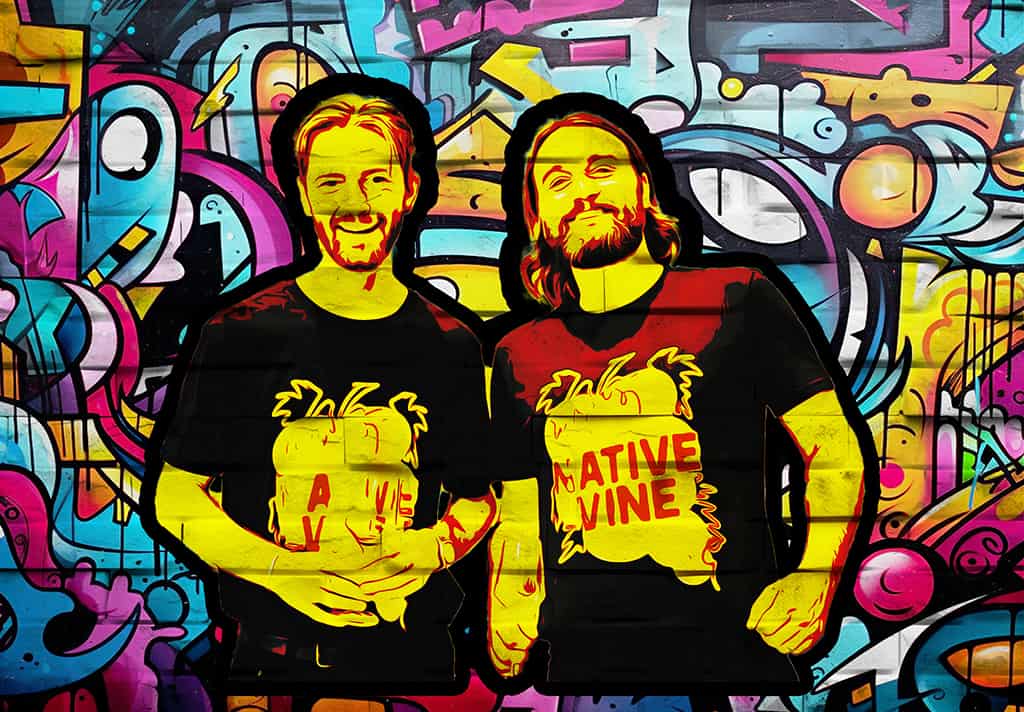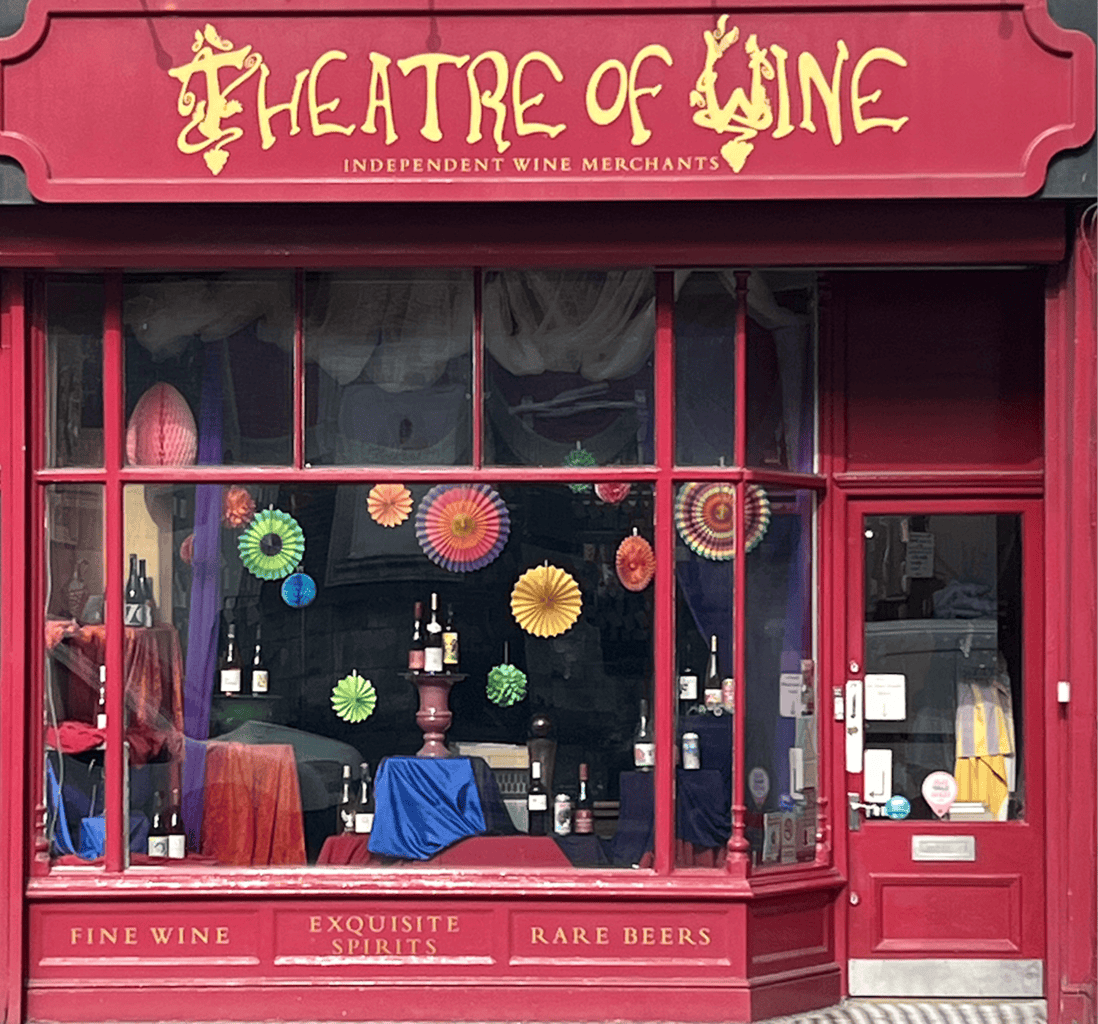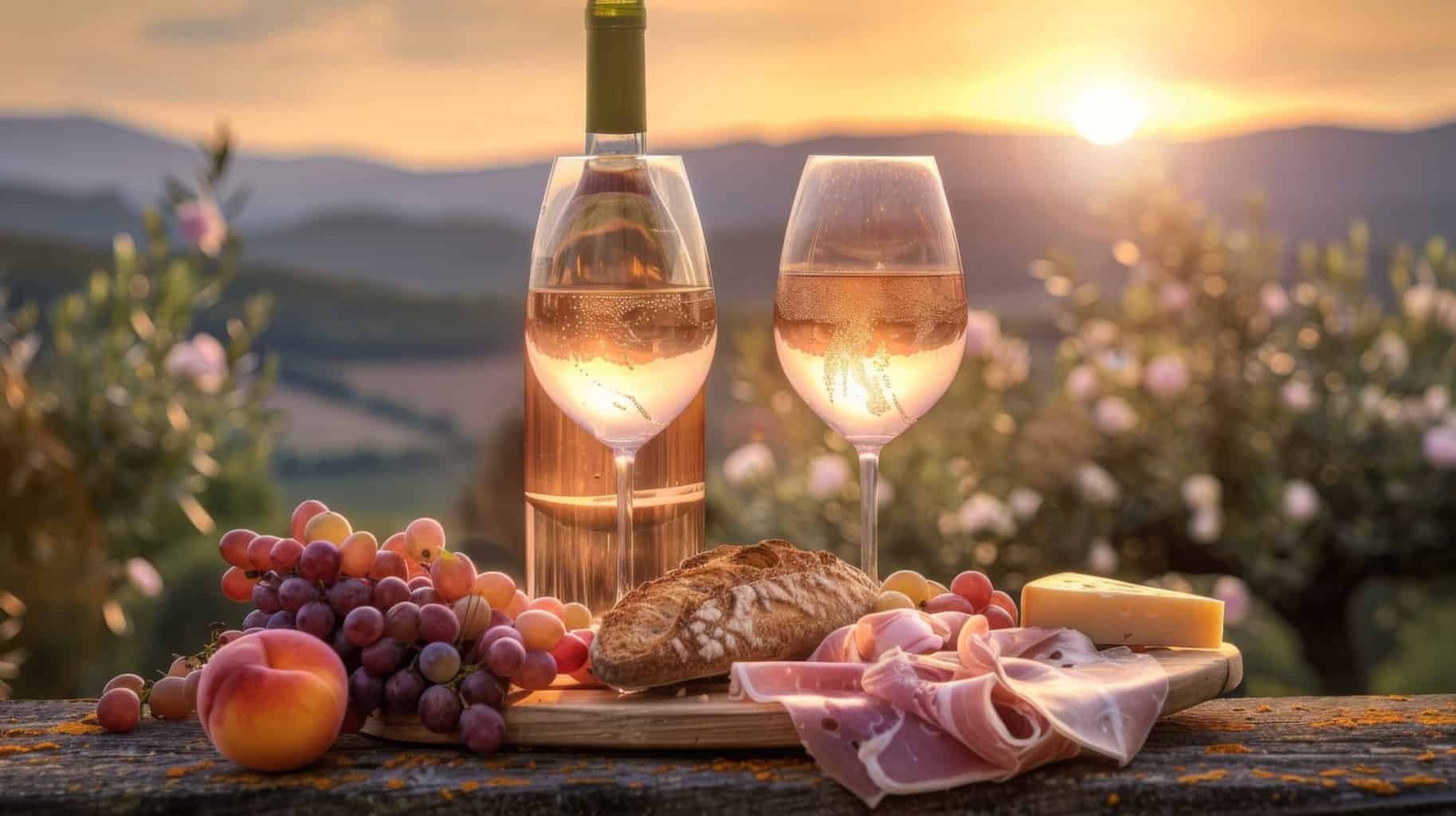Crowned Britain’s first Green Capital, it’s not surprising that Bristol is wholeheartedly sustainable about its food. Now, natural wines are surging through the city, thanks to specialists such as Native Vine, which took root in a sourdough bakery during lockdown. Bee Costello-Bates meets Charlie Jones
Rebellious Bristol unshackled itself from its grim past when the statue of slave trader Edward Colston was toppled into the harbour.
The city was Britain’s first European Green Capital and, says Charlie Jones of Bristol’s Native Vine, eating out is very much farm-to-fork here.
Now, the natural wine specialist is bringing its sustainable wines, spirits and ciders to the masses.
Native Vine’s bottle shops and wine bars are found in three sites across Bristol. They operate inside trendy sourdough bakery and café The Bristol Loaf – a sibling company founded by chef-entrepreneur Gary Derham in 2017.
We headed to its bottle shop in the edgy neighbourhood of Bedminster, a stone’s throw from the regenerated docklands of Spike Island and Wapping Wharf. With its modern restaurants, a nearby artists’ residence and contemporary wharf apartments on the way, Bedminster feels much like the Battersea of the 90s.
The locals are a heady mix of artists, chic business folk and students. And it wouldn’t be a city suburb without the kebab shop, the massage parlour, the busy Asda bus stop, or the substance-user slinking past in a daze, sporting a trench-coat and deerstalker hat.
Inside The Bristol Loaf’s funky grey-brick-and-glass building you’re struck by the happy vibe and soulful beats. The café seats 70 for breakfast and lunch in industrial surroundings – think grey-tiled floors and a ceiling bursting with plants. Fresh organic produce is available to buy from wicker baskets on the way out.
Native Vine’s retro-fluorescent hanging sign guides you to its floor-to-ceiling walls of colourful, artisan wine labels.
Bristol’s largest venue, Colston Hall, re-opened in December as the Bristol Beacon following a £132m revamp, and natural wines are the only ones served at Native Vine’s new wine bar there.
With 2,500 visitors and two shows a day, the Beacon offers this funky retailer a captive audience for its high quality, natural wines at affordable prices.

How did Native Vine and its focus on natural wine come about?
Our overarching company is The Bristol Loaf, which was started by Gary Derham as a sourdough bakery. In lockdown, Gary had space here when another business pulled out and had to fill it. I was unemployed but knew Gary from my previous jobs in wine wholesale and sustainable packaging. He called me up one day and said: “Do you want to work in a wine shop with me?”
Dan Briggs then came in as consultant. His background was Majestic; he has a wine diploma and had imported for London’s private members’ clubs and high-end restaurants. He saw a commonality with low-intervention farming and saw the natural wine scene bubbling in London. We took off from there, sourcing wines that were farmed well, artisan, high quality and affordable.
What’s the ethos of Native Vine?
It’s around trying to make wines as accessible as possible. Inaccessibility in wine exists both in natural wine and in classical wine, right? The natural wine movement is supposed to be about a freeing, a breaking of shackles and shedding of rules, but there’s also an exclusivity to it. We try to be as open as we can to everything. We’re not dogmatic about the wines we source, we just find good wines made by good people.
You opened in the middle of Covid. How was it for you?
A rollercoaster! But we were allowed to stay open because of the greengrocer and café selling fresh produce. Like many wine merchants, we did tastings over Zoom and deliveries.
Tell us about your range.
It’s stylistically broad and changes frequently, which reflects the type of wines we work with. We focus on small-batch production, very seasonal and highly sought-after. We have a bit of a running joke that we’ve got some 250 wines but at some times not a single Cabernet Sauvignon, Merlot or Pinot Grigio, sometimes not even a Rioja or Bordeaux.
But for me, it’s about making sure there is always something that fits that gap. We like to keep things interesting and customers like to learn, seeing something different every time they come in.
What would you supplement for, say, a claret?
One winery that I love is Contrà Soarda in Veneto. They make some really amazing red blends with Merlot and it changes every year with Marzemino Nero, Pinot Nero and local indigenous grapes. It’s also quite a traditional bottle.
Do you lay your wines out by country or by style?
Basically, it’s laid out from light to intense. Customers often might not know the grape variety or region or, even if they do, there are different styles within it. So, if someone comes in and says, “I’m looking for a white wine,” we just start with, “do you want something light or something heavy?” Instantly you find people trying new stuff.
We felt that laying out by country means the lesser-known countries or regions get left out. By positioning, say, Austrian Blaufränkisch next to Pinot Noir people will have a look and see it’s in a similar sort of realm.
Is it 100% natural wine on the shelves?
I’d say 99%. A few of our wines have small amounts of sulphur added. Currently, everything is wild fermented and a few wines are classified sustainable. Quite a few come from slightly larger projects like co-operatives.
For me it’s more of an ethos about being as low intervention as possible, and as organic as possible, but I’d rather have a good, sustainable wine by a producer with stability.

Tell us about your Wild Wine tickets in the shop and online.
Some people may think a wine is off, so we have Wild Wine tickets to highlight wines that are a bit more challenging or unusual. But we have some people who come in and look for the Wild Wine tickets because they like the unusual flavours.
What do Wild Wine drinkers look like – heavy metal fans, Camra members?
[Laughing] Not necessarily! Sometimes our Wild Wine people come to food pairings. We just had an amazing dinner at a Korean restaurant. One orange wine from Roussillon was big, warm, aromatic and botanic. And when you’ve got five-year-old fermented chilli bean paste on your plate, or Wagyu beef, or crazy flavours, it’s a match made in heaven. I think wild wines have a place for people who want to drink something more unusual and see the other end of the spectrum.
What’s your demographic?
Genuinely, it’s mixed and spans all ages. Maybe it’s all part of being affiliated to The Bristol Loaf but lots of our customers come into the café with no intention of buying wine and end up in the bottle shop.
We have students too but predominantly the 25-40 age group would be our core and typically the average spend is £15-£20.
Are the wild wine drinkers within that 25-40 age group?
Yes, and within that, they are the more curious. Often, they’re chefs or sometimes they’re not from a wine-drinking background. They just have an interest in flavour and tend to have a bit more of an open mind towards natural wines. They’re really fun because they don’t have preconceptions.
Do customers know before they get here that you only sell natural wine?
No! I’d say the majority of our customers aren’t coming to us because they like natural wine. They’re coming in to buy a bottle of wine and then we have regulars who come to us to be challenged. It’s opened up a new part of the wine world to them. With others, they care more about the natural ethos of the wines.
In the bottle shop, we always have wines on tap – we have four keg lines and we normally have a couple of things in bag-in-box. The café’s glass list offers 10 to 12 wines and people can also pick wines straight from the wall and drink in. Corkage is £12.50.
This wine label just has half a percentage sign – as its label. Is it common to just see a graphic?
That’s right, the artisan producer doesn’t put a lot on the label so they’re relying on you, or the label, to make their decision. I guess we’re one degree of separation from the artisan winemaker.
A lot of our suppliers have quite small portfolios and will only be focused on maybe 40 or 50 growers. It means we can have quite personal conversations with them, understanding where they’re coming from, so we can tell their stories. But their vibrant colours and pretty labels are sometimes enough to get customers into the shop. They’re a fantastic vehicle. I studied a creative subject and have a bit of a dream to develop wine education and to communicate it in a creatively-led way.
Do you have natural wines that look clear in the glass?
Oh, 100%. A few of our producers will do bentonite filtration but that’s not common. There’s one winery we work with and you can tell whether the wine’s from the beginning or end of the batch. The earlier ones are super-clear and the later ones have a bit more haziness.
But we always talk to people about it – some regulars prefer the challenge.

What lessons have you learnt in the short time you’ve been trading?
We used to run our wine festivals around October-November but it was that tricky time during harvest and we were struggling to get winemakers to attend. We also have quite a strong cider offering and were really keen to promote cider in-store and through the festival.
But last year, one of our cidermakers had to run off because one of his fermentations had burst the container, so he had to abandon his table in the middle of the festival.
Any British natural wine producers in the range?
We work with Ancre Hill and Limeburn Hill, and we have a new wine from Hastings by someone who used to work for Davenport. It’s a wild-fermented Bacchus with no filtration or fining and the label was illustrated by Quentin Blake – it’s one of only 808 bottles [£28.50].
What’s in the glass cabinet?
Rare and collector wines, so they’re either a high price point or small batch. We’ve got some that are a single hectare on Mount Etna, such as Frank Cornelissen’s wines, which are highly sought after. He has a cuvée called Magma and it’s the first ever natural wine to get any Parker points. It’s multi-vintage and one of our £99 wines [Cornelissen’s wines reach up £695].
How does your business break down into shop sales, online and wine bar?
Retail is still dominant. Second is an uptake in events this year and the nice thing is the space gives us opportunities for business events and food pairings.
In the evening, the café is empty, so tonight we have a chef’s 10-course tasting dinner. Next weekend another chef is cooking a seafood-based tasting menu and then we’ve got a post-cider harvest celebration. It was one a week till Christmas, so it’s definitely a growing part of the business and the affiliation with the café is strong.
How much does Gary Derham get involved in the business?
Gary runs The Bristol Loaf and is a great ideas man – he’s very good at understanding our market and the customer and he helps to curate some of our events.
Do you have three tips for independents looking to sell natural wines?
One, find the right wholesaler. If this is a new project, you need someone who’s supportive and able to work with you to find the right wines. Nothing is definitive in natural wine. There is something out there for you, there’s just real diversity. [Native Vine works with Les Caves de Pyrene].
Two, natural wines are not all cloudy and funky – that’s the fun side of it. They’re not all recognisable labels or grape varieties but the rewards are super interesting wines and appellations.
Three, some people think natural wine will be more expensive because it’s smaller scale, and that’s true to a point. There’s a slightly higher minimum price point as it’s hard to do things for less than £10 per bottle. But within that mid-range, you can get some really amazing products that don’t have the same prestige as Bordeaux or grand cru Burgundy but are made with just as much love and care and quality ingredients. They offer the customer something really special and if £50 Burgundy is out of their reach, then I think there are ways to fill it.
What does the future hold?
It’s difficult to answer, partly because everything’s changed so many times. Now, tastings are a big part of our business but once upon a time we weren’t able to taste with customers. And I laugh because Gary loves new toys and doing new things and looking for opportunities so who knows. But in the short-to-medium term we’re focusing on Bristol Beacon – it’s a mammoth project. It’s then the utilisation of this [Bedminster]space – we’d really like to be doing more events as it’s always been a bit of an untapped market for us, perhaps more semi-permanent evening offerings. And website sales – we’ve been working on our website since we opened in 2020 and we’re confident with what we’ve built.
There seems to be a moth connection between your Instagram page and some wine labels. Do you have some sort of moth cult following?
There’s nothing conscious behind it. But I have a moth wing tattoo behind my ear. It’s something that’s recurring and maybe I’m drawn to them.
One of our producers uses butterflies on their label, because they began making wine biodynamically 30-plus years ago and started noticing rare forms of butterfly in amongst the vineyards. We still hear it a lot, where cleaner farming practices create a broader and ecological sphere and winemakers start seeing a wider range of species, so it’s quite nice to have that connection to nature.








